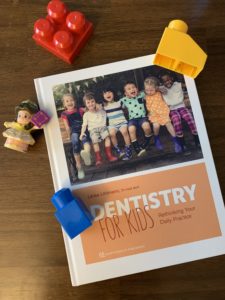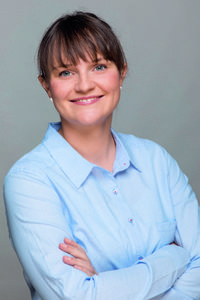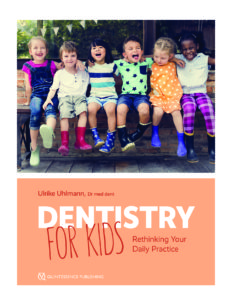Reading time: 8 minutes
Facial esthetics has become one of the fastest-growing industries in the world, and in the United States roughly 9% of dentists are already performing elective cosmetic procedures. As the field continues to evolve and patients demand more and more of practitioners, it is clear that both the beginner as well as the advanced practitioner seek convenient, safe, and effective therapies. Platelet-rich fibrin is an ideal biomaterial in this sense because it is entirely natural—derived from a person’s own blood—and can be administered start to finish in as little as 35 minutes. Dr Richard J. Miron, biomaterials researcher and coauthor of PRF in Facial Esthetics (with Dr Catherine Davies), knows that the potential for PRF in facial esthetics is vast, and he’s excited to see what the future brings. Read on to learn what he has to say about PRF and its future, specifically in facial esthetics.

Syringe with collected liquid PRF ready for future facial injection purposes.
How does PRF differ from facial fillers?
Facial fillers are literally trying to “fill” facial voids, whereas PRF is trying to regenerate tissues naturally.
Facial fillers are literally trying to “fill” facial voids, whereas PRF is trying to regenerate tissues naturally. Definitely between the two, the use of PRF is more natural, but of course fillers offer that “wow!” factor, where a more dramatic change can be achieved quickly. PRF is typically favored for the newbie patient just entering the field with a desire to achieve a more youthful look. These patients are excellent candidates because many are not looking for dramatic and unnatural changes, and they will appreciate knowing that the biomaterial utilized is entirely derived from natural sources. Everyone should consider this as a first option before jumping the gun on fillers or toxins that may offer more permanent changes undesired by patients.
Why should people consider incorporating PRF into their arsenal of facial esthetics?
Safety first. Especially for doctors who are just entering the field, I can’t think of a better way to learn injection techniques than to utilize a completely natural product with fewer risks. Fillers and toxins each possess a risk for allergic reactions, which can be a bit intimidating for both the new practitioner as well as the new patient. Worldwide the number of individuals with allergies has grown due to the increase of exposure to unnatural chemical derivatives, and many biomaterials/fillers are loaded with a variety of them. Therefore, having the training and skill to utilize PRF in facial esthetics to cater to those who desire a natural treatment alternative is essential and results in a variety of treatment options that serve the entire community.
What are the most exciting applications of PRF?
Personally, I feel that microneedling with PRF is the “bread and butter” of the applications because the procedure is easy, straightforward, and consistently leads to good esthetic results. I can’t think of a single patient who has ever been disappointed from the procedure, and there are literally minimal risks associated with the procedure.
Microneedling with PRF is the “bread and butter” of the applications because the procedure is easy, straightforward, and consistently leads to good esthetic results.
What’s the future of facial esthetics and PRF?
As someone who enjoys new, innovative technologies, I foresee two exciting avenues for the future. First, we have spent a considerable amount of time developing the Bio-Heat protocols, whereby the properties of PRF are extended from 2–3 weeks to 4–6 months simply by a heating process. Therefore, PRF can act more as a “biofiller” with extended working properties. We have had quite successful results with doctors incorporating this technology within their offices.

PRF naturally regenerates tissues, resulting in a natural-looking outcome.
Secondly, the combination of the Fotona laser with PRF has really opened my eyes to the power of energy. Amazingly, both technologies work via completely different modes of action and complement one another perfectly, while both remain entirely natural (no entry into the body of foreign molecules/chemicals). For me personally, I am a big believer in a natural treatment approach, which is why this combination working together synergistically is the most exciting for me. Truthfully, I hope there comes a day where better results are obtained with lasers and PRF in comparison to fillers and Botox. I don’t foresee this happening without the use of lasers, and I believe we have only scratched the surface of their full potential.

Dermal fillers fill tissues unnaturally, resulting in a less natural-looking appearance.
I think over the last decade people started to delve too far into the “unnatural look,” and this is partially a result of movie stars heading down that road. Today, more and more cultures around the world appreciate a more natural look, and this is much easier to achieve with an all-natural biomaterial like PRF combined with laser therapy, in comparison to the various fillers and toxins commonly utilized in today’s market.
I believe that dentists are in an ideal position to offer PRF and facial esthetic options to their patients.
I believe that dentists are in an ideal position to offer PRF and facial esthetic options to their patients. Owing to the huge demand and market (it’s a multibillion dollar industry, with many more dollars spent in the field comparatively), dentists are fully capable of slowly dominating the market over time. While there are “med spas” popping up at every major street corner in big cities like Los Angeles, Miami, and New York, I personally believe that dentists are in better positions to do injections as a result of doing them all day in a complex and more difficult area such as the mouth. We already have a substantial educational background in head and neck anatomy. I do not feel any other profession is better suited or qualified for the field of minimally invasive facial procedures.
With roughly 9% of American dentists already performing elective cosmetic procedures, there is a substantial amount of dental offices who are now profiting from performing such procedures (over 20,000). That trend is increasing year after year, and I only expect that it will continue and that there will come a day where cultures will accept that dentists are performing the majority of these procedures. This would be similar to what has occurred over the past 20 years with respect to sleep apnea, which is now commonly offered in various dental offices. Twenty years ago, it would have been considered a bit strange for a dentist to offer such a therapy, but today it is widely accepted. I believe the same will occur regarding dentists and facial esthetic procedures and that someday in the near future, they will be the leading practitioners in the field of minimally invasive facial esthetic procedures. This was the exact reason for writing this first textbook on this specific topic solely dedicated to minimally invasive and natural therapy with PRF!
Finding Your Feet with PRF
To learn more about how to incorporate this natural biomaterial into your existing facial esthetic practice, or to start from scratch, check out PRF in Facial Esthetics. Preview the first chapter here.
Beyond Facial Esthetics
If facial esthetics is not your thing, consider using PRF for its many other applications in dentistry, including ridge augmentation, sinus grafting, and even endodontics. Drs Mohammad Sabeti, Edward S. Lee, and Mahmoud Torabinejad recently published PRF Applications in Endodontics. Preview the book here.
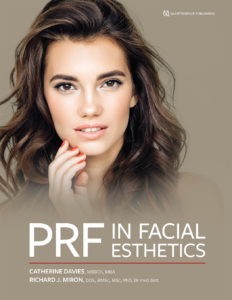
PRF in Facial Esthetics
Catherine Davies and Richard J. Miron
Written in collaboration with international experts from various fields of medicine, including basic scientists, clinician-scientists, experts in laser therapy and photography, as well as plastic surgeons and hair restorative surgeons, this book collectively offers a comprehensive approach to using platelet-rich fibrin (PRF) in facial esthetics. PRF has been used for decades in regenerative medicine, and slowly it has made its way into the medical esthetic arena, often used in combination with other leading therapies to support minimally invasive esthetic procedures. This book therefore starts at the beginning, first exploring the biology and anatomy of the skin and hair before turning to a discussion of photographic record-keeping and patient consultation. Then follow chapters on the biology of platelet concentrates and microneedling, skin and hair regeneration, lasers, and the use of PRF in plastic surgery. The final chapter looks to the future and considers what else could be possible. If you perform any facial esthetic procedures in your office or want to learn how, this book is a must.
248 pp; 380 illus; © 2020; 978-0-86715-957-8 (B9578)
Contents
1. Introduction to Facial Esthetics and PRF
Richard J. Miron, Catherine Davies
2. Facial Anatomy, Skin Biology, and the Effects of Aging
Catherine Davies, Richard J. Miron
3. Photography in Facial Esthetics
Walter Rozen, Richard J. Miron, Catherine Davies
4. Consultation for the Facial Esthetic Patient
Richard J. Miron, Catherine Davies
5. Consultation for the Hair Loss Patient
Alan J. Bauman, Catherine Davies, Richard J. Miron
6. Use of Platelet-Rich Fibrin in Facial Esthetics
Richard J. Miron, Yufeng Zhang, Ana Paz, Masako Fujioka-Kobayashi, Catherine Davies
7. Biology of Microneedling
Erin Anderson, Nichole Kramer, Richard J. Miron, Ana Paz, Catherine Davies
8. Injection Techniques with Platelet-Rich Fibrin
Catherine Davies, Ana Paz, Alireza Panahpor, Ana Cristina, Richard J. Miron
9. Hair Regeneration with Platelet-Rich Fibrin
Catherine Davies, Richard J. Miron
10. Lasers in Facial Esthetics
Ana Paz, Harvey Shiffman, Miguel Stanley, Catherine Davies, Richard J. Miron
11. Skin Care Products and Their Effect on Aging Skin
Geir Håvard Kvalheim, Catherine Davies, Richard J. Miron
12. Future Trends in Esthetic Medicine
Carlos Fernando de Almeida Barros Mourão, Delia Tuttle, Ruth Delli Carpini, Scott Delboccio, Richard J. Miron, Catherine Davies
 Catherine Davies, MBBCh, MBA, is a medical doctor practicing in Johannesburg, South Africa, with a special interest in esthetics, regenerative medicine, and hair restoration. She has over 14 years of experience in FUE hair transplant surgery. She is board certified in stem cell medicine from the A4M Academy in the United States. Dr Davies frequently lectures and trains on medical procedures and is passionate about medical education. She recently featured in and produced an international medical TV show called Outpatients, which is on its third successful season and airs in 180 countries. Her passion is to drive social change through the use of media. She is the proud mother of three children.
Catherine Davies, MBBCh, MBA, is a medical doctor practicing in Johannesburg, South Africa, with a special interest in esthetics, regenerative medicine, and hair restoration. She has over 14 years of experience in FUE hair transplant surgery. She is board certified in stem cell medicine from the A4M Academy in the United States. Dr Davies frequently lectures and trains on medical procedures and is passionate about medical education. She recently featured in and produced an international medical TV show called Outpatients, which is on its third successful season and airs in 180 countries. Her passion is to drive social change through the use of media. She is the proud mother of three children.

Richard J. Miron, DDS, BMSc, MSc, PhD, Dr med dent, is currently the lead educator and researcher at Advanced PRF Education and is Adjunct Visiting Faculty in the Department of Periodontology at the University of Bern in Switzerland, where he completed his PhD studies. He has published over 200 peer-reviewed articles and lectures internationally on many topics relating to growth factors, bone biomaterials, and guided bone regeneration. He is widely considered one of the top contributors to research in dentistry, having recently won the ITI André Schroeder Prize, the IADR Young Investigator of the Year in the field of implant dentistry, as well as the IADR Socransky Research Award in the field of periodontology. Dr Miron has written two best-selling textbooks in regenerative dentistry, including Next-Generation Biomaterials for Bone & Periodontal Regeneration (Quintessence, 2019), and he’s just getting started.





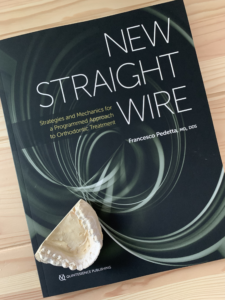 Orthodontics as a dental specialty is known for having many camps within it and many subgroups of people following a specific philosophy. Take cephalometry, for example. You have the Steiner system, the McNamara system, and the Wits, Downs, Björk, Tweed, Jarabak, and Ricketts systems, among others. And then there’s the appliances orthodontists swear by: headgear, face mask, palatal expanders, molar distalizers, Twin Block, Bionator, Forsus, Frankel, elastics, retainers, and many, many more. It’s easy to see how orthodontists can get bogged down in the different theories and techniques and focus their treatment based on the philosophy they were taught. But just because there’s a lot of noise in the discipline doesn’t mean a simpler way doesn’t exist. Orthodontic treatment can be systematic, and it can be scientific. You just have to know where to begin.
Orthodontics as a dental specialty is known for having many camps within it and many subgroups of people following a specific philosophy. Take cephalometry, for example. You have the Steiner system, the McNamara system, and the Wits, Downs, Björk, Tweed, Jarabak, and Ricketts systems, among others. And then there’s the appliances orthodontists swear by: headgear, face mask, palatal expanders, molar distalizers, Twin Block, Bionator, Forsus, Frankel, elastics, retainers, and many, many more. It’s easy to see how orthodontists can get bogged down in the different theories and techniques and focus their treatment based on the philosophy they were taught. But just because there’s a lot of noise in the discipline doesn’t mean a simpler way doesn’t exist. Orthodontic treatment can be systematic, and it can be scientific. You just have to know where to begin.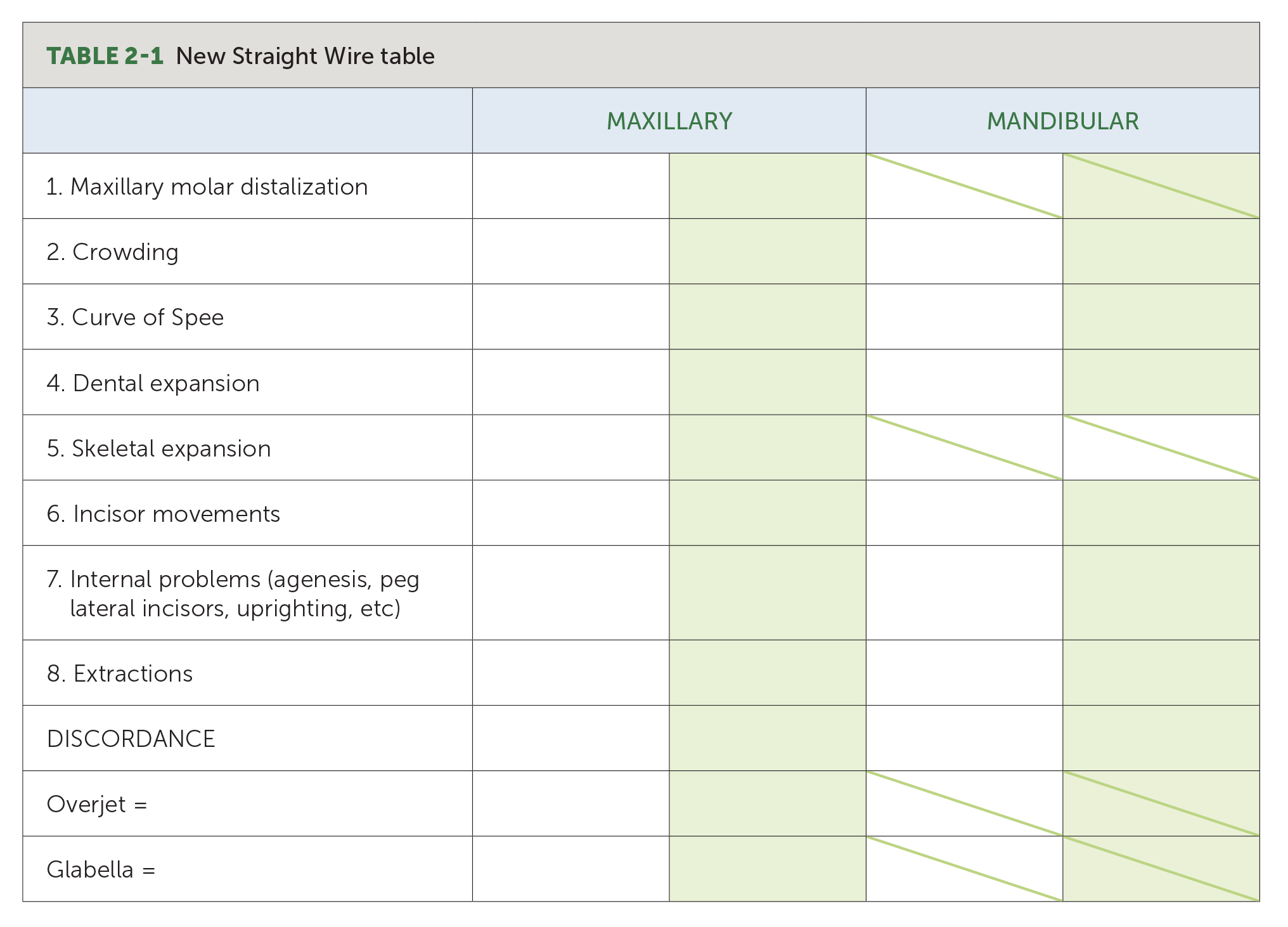
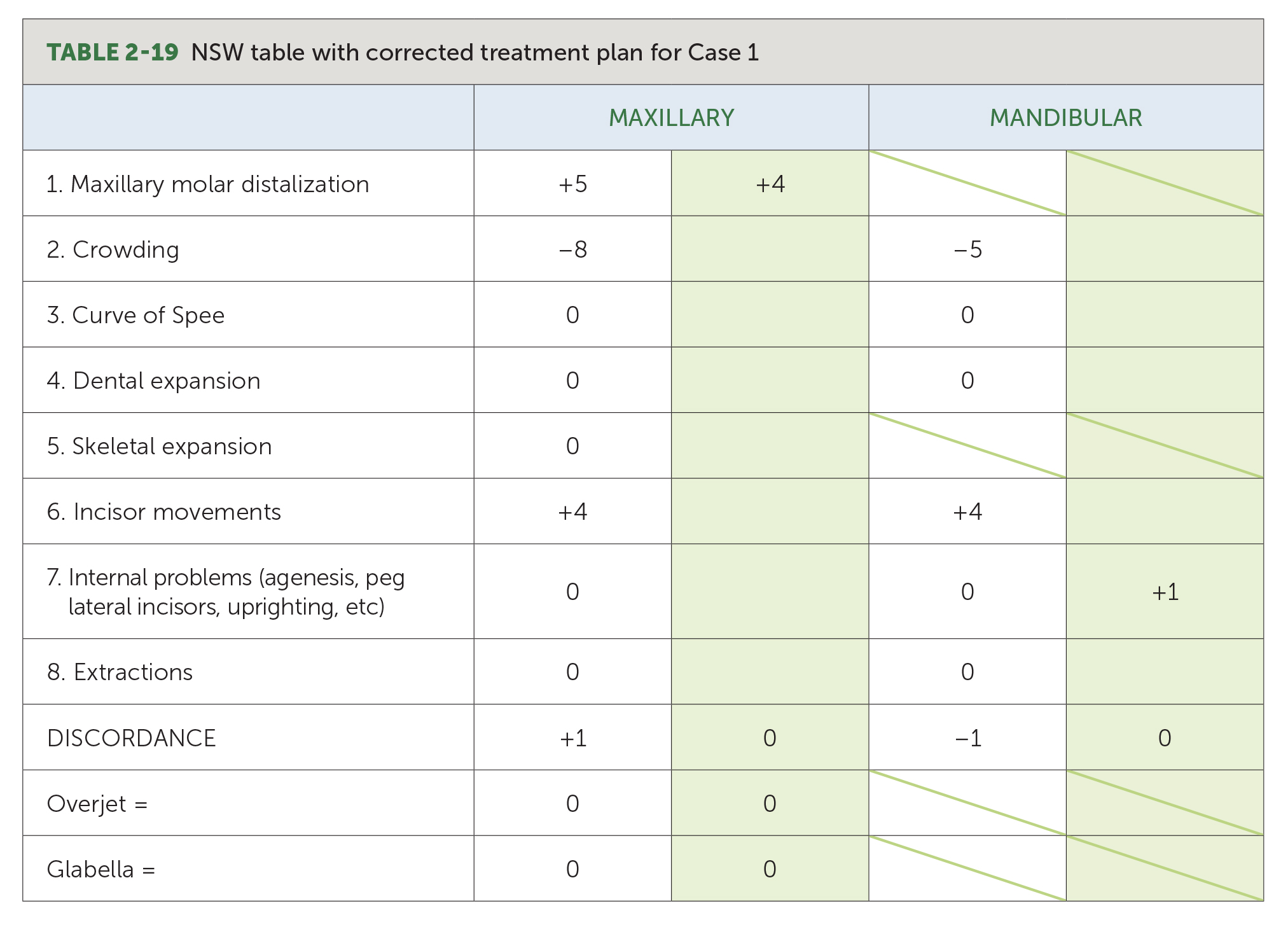
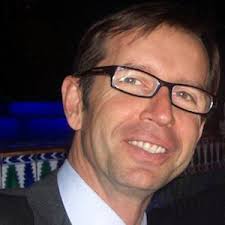 Francesco Pedetta, MD, DDS, graduated in medicine and surgery with a postgraduate dentistry qualification in Italy. In 1991, he joined the prestigious Postgraduate School of Orthodontics at the University of Pennsylvania in Philadelphia, where he gained his Certificate of Orthodontics under the guidance of Dr Robert L. Vanarsdall. After returning to Italy, he set up a private practice limited exclusively to orthodontics and temporomandibular disorders but continued to lecture at the University of Pennsylvania as well as at Perugia University. In 2012, he met the master of orthodontics, Dr Larry Andrews, who initiated him into the 6 Elements philosophy, inspiring him to completely change his approach. Dr Pedetta then devoted himself to teaching this philosophy. He then went on to develop his personal orthodontic approach known as the New Straight Wire approach, which incorporated all of Andrews’s teachings in an up-to-date and effective method encompassing diagnosis, treatment planning, and therapy.
Francesco Pedetta, MD, DDS, graduated in medicine and surgery with a postgraduate dentistry qualification in Italy. In 1991, he joined the prestigious Postgraduate School of Orthodontics at the University of Pennsylvania in Philadelphia, where he gained his Certificate of Orthodontics under the guidance of Dr Robert L. Vanarsdall. After returning to Italy, he set up a private practice limited exclusively to orthodontics and temporomandibular disorders but continued to lecture at the University of Pennsylvania as well as at Perugia University. In 2012, he met the master of orthodontics, Dr Larry Andrews, who initiated him into the 6 Elements philosophy, inspiring him to completely change his approach. Dr Pedetta then devoted himself to teaching this philosophy. He then went on to develop his personal orthodontic approach known as the New Straight Wire approach, which incorporated all of Andrews’s teachings in an up-to-date and effective method encompassing diagnosis, treatment planning, and therapy.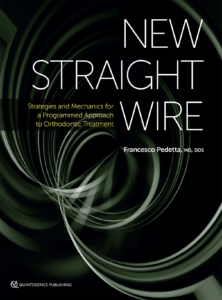 New Straight Wire: Strategies and Mechanics for a Programmed Approach to Orthodontic Treatment
New Straight Wire: Strategies and Mechanics for a Programmed Approach to Orthodontic Treatment

 Enrico Agliardi, MD, DDS, PhD, graduated with honors from the University of Milan in 1994, specializing in medicine and surgery. At the same university, he attained a specialization in maxillofacial surgery in 2000 and a specialization in orthodontics in 2005. Since 2009, Dr Agliardi has been in charge of the Special Rehabilitation Surgery department at the Department of Dentistry of IRCCS San Raffaele of Milan, and he is also a professor in the Special Rehabilitation Surgery Department at Vita-Salute San Raffaele University. For over 15 years, he has been involved in the implant-prosthetic rehabilitation of compromised patients with tilted and zygomatic implants.
Enrico Agliardi, MD, DDS, PhD, graduated with honors from the University of Milan in 1994, specializing in medicine and surgery. At the same university, he attained a specialization in maxillofacial surgery in 2000 and a specialization in orthodontics in 2005. Since 2009, Dr Agliardi has been in charge of the Special Rehabilitation Surgery department at the Department of Dentistry of IRCCS San Raffaele of Milan, and he is also a professor in the Special Rehabilitation Surgery Department at Vita-Salute San Raffaele University. For over 15 years, he has been involved in the implant-prosthetic rehabilitation of compromised patients with tilted and zygomatic implants. Davide Romeo, DDS, PhD, graduated with honors from the University of Milan in 2005, specializing in dentistry and dental prosthetics and with a thesis on the clinical efficacy of the All-on-4 protocol. He later obtained a doctorate from research in innovative techniques in oral implantology and implant-prosthetic rehabilitation, attending the dental clinic of the Galeazzi Institute of Milan before completing a year of study in periodontology at the Department of Periodontology and Implantology at New York University. He has been collaborating with Dr Enrico Agliardi for 14 years, carrying out clinical and research activities on immediate and partial and complete rehabilitations.
Davide Romeo, DDS, PhD, graduated with honors from the University of Milan in 2005, specializing in dentistry and dental prosthetics and with a thesis on the clinical efficacy of the All-on-4 protocol. He later obtained a doctorate from research in innovative techniques in oral implantology and implant-prosthetic rehabilitation, attending the dental clinic of the Galeazzi Institute of Milan before completing a year of study in periodontology at the Department of Periodontology and Implantology at New York University. He has been collaborating with Dr Enrico Agliardi for 14 years, carrying out clinical and research activities on immediate and partial and complete rehabilitations.




 Catherine Davies, MBBCh, MBA, is a medical doctor practicing in Johannesburg, South Africa, with a special interest in esthetics, regenerative medicine, and hair restoration. She has over 14 years of experience in FUE hair transplant surgery. She is board certified in stem cell medicine from the A4M Academy in the United States. Dr Davies frequently lectures and trains on medical procedures and is passionate about medical education. She recently featured in and produced an international medical TV show called Outpatients, which is on its third successful season and airs in 180 countries. Her passion is to drive social change through the use of media. She is the proud mother of three children.
Catherine Davies, MBBCh, MBA, is a medical doctor practicing in Johannesburg, South Africa, with a special interest in esthetics, regenerative medicine, and hair restoration. She has over 14 years of experience in FUE hair transplant surgery. She is board certified in stem cell medicine from the A4M Academy in the United States. Dr Davies frequently lectures and trains on medical procedures and is passionate about medical education. She recently featured in and produced an international medical TV show called Outpatients, which is on its third successful season and airs in 180 countries. Her passion is to drive social change through the use of media. She is the proud mother of three children.
